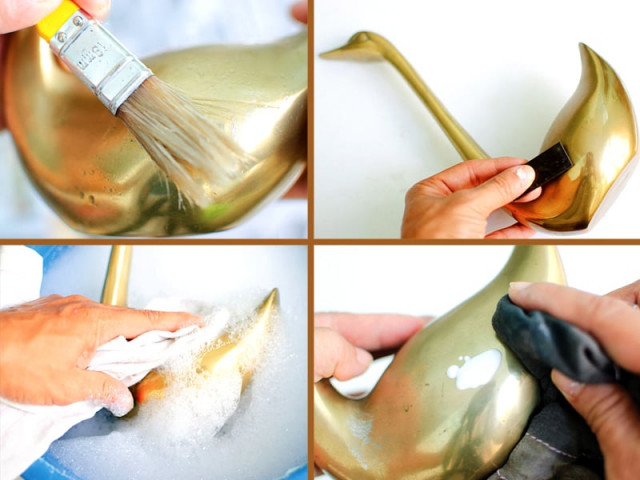Perfecting your brass curios
Here a tips suggested by Wikihow that will make you curios just like you want it to be.

Proper cleaning is critical, though, because if you fail, improper cleaning can damage the brass permanently.
Proper cleaning is critical, though, because if you fail, improper cleaning can damage the brass permanently. Here a tips suggested by Wikihow that will make you curios just like you want it to be:

Determine whether the object is actually brass. Hold a magnet to the object. If the magnet sticks, the object either contains no brass or is just brass-plated. Do not use any sort of abrasive cleaning techniques.

Determine whether to clean your brass. Just because brass has tarnished doesn’t necessarily mean it needs to be cleaned. Tarnish may sometimes produce a desirable patina that enhances a piece.

Wash the brass with soapy water. If the brass is simply dirty or oily, mix a mild detergent with warm water. Dip a soft cloth into the soapy water, and wipe the piece down with the cloth.

Toothpaste can be used as a mild polish. A mixture of equal parts of water and white vinegar, plus a cup of flour also make a mild polish. Use a toothbrush to get to hard to reach places or inside the lines of delicate engravings. Brush gently to avoid damaging the engraving.

Remove lacquer coating. Lay down newspaper to protect your work surface, and use a paintbrush to apply a paint or varnish-removing chemical to the brass. Use these chemicals safely.

Polish the brass. Apply brass polish to a cloth, and rub it into the brass. Use a second clean, dry cloth to buff the brass to a dazzling shine.

Reapply lacquer to the brass. Apply lacquer to give the brass a protective coat that will help maintain its shine. Use cotton balls or a paintbrush to apply it. Apply only a thin layer, and make sure to apply it evenly. Wipe up any drips before they dry. Let the brass dry before touching it.
Published in The Express Tribune, May 24th, 2014.
Like Life & Style on Facebook, follow @ETLifeandStyle on Twitter for the latest in fashion, gossip and entertainment.



















COMMENTS
Comments are moderated and generally will be posted if they are on-topic and not abusive.
For more information, please see our Comments FAQ